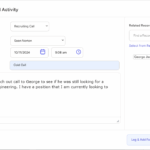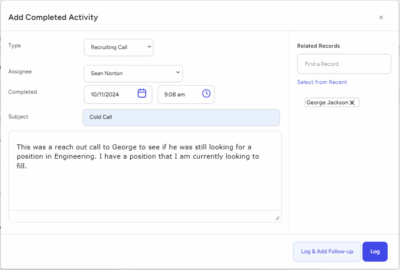In today’s fast-paced and ever-evolving business landscape, organizations of all sizes are recognizing the crucial role that technology plays in streamlining HR processes, enhancing employee experiences, and driving overall productivity. From talent acquisition and onboarding to performance management and employee engagement, Human Resources (HR) Software-as-a-Service (SaaS) solutions have emerged as a game-changer, enabling businesses to optimize their human capital management strategies.
However, before we delve into this dynamic world, let’s take a moment to set the parameters of our discussion . . .
What is HR SaaS software?
In other words, what is HR SaaS software?
HR SaaS software refers to Human Resources Software as a Service, a cloud-based solution that enables organizations to manage their human resources functions and processes more efficiently. It is a technology-driven platform designed to streamline and automate various HR tasks, such as recruitment, employee onboarding, time and attendance tracking, performance management, payroll, benefits administration, and employee self-service.
By leveraging the power of the cloud, HR SaaS software eliminates the need for on-premises installations and provides a scalable, cost-effective, and accessible solution for businesses of all sizes. It offers a centralized hub where HR professionals can easily store, organize, and retrieve employee data, generate reports, and track key HR metrics. Furthermore, it promotes collaboration and engagement by allowing employees to access and update their information, request time off, and participate in performance evaluations.
HR SaaS software typically comes with customizable features and integrations with other essential tools, such as applicant tracking systems and payroll processors. This flexibility empowers organizations to adapt the software to their specific HR requirements and seamlessly integrate it into their existing tech stack. Overall, HR SaaS software revolutionizes HR management by streamlining processes, enhancing data accuracy, and empowering both HR professionals and employees.
And we thought now might be a good time to mention the HR SaaS solution provided b Top Echelon Software. With their extensive industry expertise and innovative approach, Top Echelon has garnered a well-deserved reputation for delivering transformative recruiting and hiring solutions that empower businesses to succeed. And we’re giving you the opportunity to experience our transformative software firsthand!
That’s because you can request a recruiting software demo of Top Echelon’s HR SaaS software. You can witness the seamless integration, powerful features, and intuitive user interface that have made us a trusted name in the industry.
Common types of HR SaaS software
In the ever-evolving HR landscape, technology has emerged as a catalyst for streamlining operations, optimizing employee experiences, and driving overall organizational success. With the rise of SaaS solutions, HR departments now have access to a wide array of innovative tools designed to simplify and enhance their day-to-day functions.
But how many types of HR SaaS software are there? And what can they do to help your business grow?
Below are some of the common types of HR SaaS software that are revolutionizing the modern workplace:
#1—Recruitment and applicant tracking systems (ATS)
Efficiently managing the recruitment process is crucial for any organization. ATS software simplifies the hiring journey by automating job postings, resume parsing, candidate screening, interview scheduling, and more. These solutions enable HR teams to streamline their hiring workflows, track applicants, collaborate with hiring managers, and make data-driven decisions to identify the best talent for their organizations.
#2—Onboarding and employee self-service
Employee onboarding sets the stage for a successful integration into the company culture. HR SaaS solutions provide self-service portals where new hires can complete paperwork, access training materials, and learn about company policies. This type of software automates onboarding tasks, ensuring a seamless and consistent experience for new employees while reducing administrative burdens for HR personnel.
#3—Performance management and employee engagement
Effective performance management solutions facilitate goal setting, continuous feedback, performance evaluations, and development planning. HR SaaS software helps organizations create a culture of feedback and recognition, fostering employee engagement and driving performance improvement. These tools often include features such as 360-degree feedback, goal tracking, performance analytics, and employee recognition programs.
#4—Learning and development
Continuous learning and development are vital for both employee growth and organizational success. HR SaaS platforms offer learning management systems (LMS) that enable companies to create, deliver, and track training programs and courses. These solutions provide a centralized hub for employees to access learning materials, complete online training modules, and track their progress. LMS software also allows HR departments to assess training effectiveness and identify skill gaps.
#5—Compensation and benefits administration
Managing compensation and benefits can be complex and time-consuming. HR SaaS solutions simplify this process by providing tools to automate tasks such as payroll processing, benefits enrollment, and time tracking. These systems often integrate with external payroll providers, ensuring accurate and efficient compensation management while maintaining compliance with legal regulations.
#6—Data analytics and reporting
HR data holds valuable insights that can inform strategic decision-making. HR SaaS software equipped with robust analytics and reporting capabilities enables HR professionals to analyze key HR metrics, identify trends, and generate comprehensive reports. These tools provide actionable insights for optimizing workforce planning, talent retention, diversity and inclusion initiatives, and overall HR strategy.
#7—Employee wellness and engagement
Employee well-being and engagement have become top priorities for organizations. HR SaaS solutions incorporate features like employee surveys, sentiment analysis, wellness programs, and benefits management to promote a healthy work environment and boost employee satisfaction. These tools help HR departments measure employee sentiment, identify areas of improvement, and implement initiatives to enhance employee well-being.
By leveraging the power of HR SaaS software, organizations can streamline their HR processes, increase efficiency, and enhance employee experiences. Whether it’s applicant tracking, onboarding, performance management, learning and development, compensation administration, data analytics, or employee wellness, there is a wide range of solutions available to meet diverse HR needs.
As technology continues to advance, HR SaaS software will evolve and expand, empowering HR professionals to drive strategic decision-making and deliver exceptional workforce experiences. By embracing these innovative solutions, organizations can position themselves at the forefront of HR management, cultivating a thriving workplace and gaining a competitive edge in today’s business landscape.
Business benefits provided by HR SaaS software
As you can see, HR SaaS solutions are indispensable tools for organizations seeking to optimize their HR operations. From streamlining administrative tasks to empowering strategic decision-making, HR SaaS software offers a myriad of benefits that drive business success.
Specifically, below are some of the key advantages that organizations can gain by implementing HR SaaS solutions:
#1—Increased efficiency and time savings
HR SaaS software automates manual and time-consuming HR tasks, such as applicant tracking, onboarding, performance evaluations, and benefits administration. By eliminating paper-based processes and streamlining workflows, organizations can significantly reduce administrative burdens, allowing HR teams to focus on strategic initiatives and higher-value activities. The increased efficiency and time savings lead to improved productivity across the organization.
#2—Enhanced data accuracy and reporting
Data integrity is crucial for effective HR management. HR SaaS solutions provide centralized databases that ensure accurate and up-to-date employee information. By automating data entry and eliminating the risks of manual errors, organizations can maintain clean and reliable HR data. Moreover, robust reporting capabilities enable HR professionals to generate insightful analytics and reports, enabling data-driven decision-making and strategic planning.
#3—Improved recruitment and talent acquisition
Recruiting and attracting top talent is a critical aspect of HR. HR SaaS software simplifies and streamlines the entire recruitment process, from job posting to candidate selection. With features such as automated resume parsing, applicant tracking, and interview scheduling, organizations can efficiently manage the entire hiring journey. These tools also facilitate collaboration between HR and hiring managers, ensuring a seamless and effective recruitment experience.
#4—Enhanced employee engagement and retention
Employee engagement and retention are essential for a productive and motivated workforce. HR SaaS software offers features such as performance management, continuous feedback, and recognition programs that foster a culture of engagement. By facilitating regular feedback, goal tracking, and career development, these tools empower employees to thrive, leading to higher job satisfaction and improved retention rates.
#5—Streamlined learning and development
Continuous learning and development are crucial for employee growth and organizational success. HR SaaS software provides learning management systems (LMS) that enable organizations to create, deliver, and track training programs. These platforms offer self-paced online courses, compliance training modules, and personalized development plans. By centralizing training resources, organizations can enhance employee skills, foster a culture of learning, and nurture talent within the organization.
#6—Effective performance management
HR SaaS software transforms traditional performance management processes. By providing tools for goal setting, continuous feedback, and performance evaluations, organizations can ensure a fair and transparent performance management system. These solutions enable timely performance assessments, facilitate coaching conversations, and support objective performance evaluations. Effective performance management drives employee growth, aligns individual goals with organizational objectives, and enhances overall performance.
#7—Scalability and flexibility
HR SaaS solutions are designed to scale with organizational needs. Whether the organization experiences growth, restructuring, or changes in HR processes, SaaS software provides the flexibility to adapt and accommodate evolving requirements. Organizations can easily add or remove users, customize workflows, and integrate additional modules as needed. The scalability and flexibility of HR SaaS software ensure that organizations can efficiently manage HR operations, regardless of their size or stage of growth.
HR SaaS software offers a multitude of business benefits, ranging from increased efficiency and time savings to enhanced data accuracy, improved recruitment processes, and enhanced employee engagement. By leveraging these solutions, organizations can streamline HR operations, boost productivity, and drive strategic decision-making. Ultimately, HR SaaS software empowers organizations to build a thriving workforce, foster a positive work culture, and gain a competitive advantage in today’s fast-paced business landscape.
Key features of a HR SaaS solution
Over the course of the past several years, SaaS solutions have revolutionized the way organizations access and utilize software applications. This includes HR SaaS solutions.
That’s because, unlike traditional on-premises software, SaaS solutions leverage the power of cloud computing to deliver a range of benefits, from scalability and cost-effectiveness to accessibility and ease of maintenance.
With this in mind, below are some of the key features that make SaaS solutions a game-changer in the business world:
#1—Cloud-based infrastructure
At the heart of a SaaS solution lies its cloud-based infrastructure. Instead of installing software on local servers or individual computers, SaaS applications are hosted on remote servers managed by the SaaS provider. This allows users to access the software via a web browser or dedicated application, eliminating the need for complex installations or hardware setups. The cloud-based infrastructure provides a scalable and reliable platform for delivering software services.
#2—Multi-tenancy
SaaS solutions are built on a multi-tenant architecture, where a single instance of the software serves multiple customers (tenants) simultaneously. This shared infrastructure enables efficient resource utilization and cost savings, as the SaaS provider can leverage economies of scale. Each tenant’s data is isolated and securely separated, ensuring privacy and data integrity. Multi-tenancy allows SaaS solutions to deliver cost-effective services without compromising performance or security.
#3—Accessibility and cross-platform compatibility
One of the standout features of SaaS solutions is their accessibility from any device with an internet connection. Users can access the software and their data from laptops, desktops, tablets, or smartphones, providing flexibility and convenience. The cross-platform compatibility ensures that users can work seamlessly across different devices and operating systems, enabling collaboration and productivity from anywhere, at any time.
#4—Automatic updates and maintenance
SaaS solutions take the burden of software maintenance off the shoulders of users. The SaaS provider is responsible for managing updates, bug fixes, security patches, and infrastructure maintenance. This eliminates the need for users to manually install updates or allocate resources for maintenance activities. Automatic updates ensure that users have access to the latest features, enhancements, and security measures without any disruption or effort on their part.
#5—Scalability and flexibility
SaaS solutions offer inherent scalability, allowing organizations to easily scale their usage up or down based on their requirements. Whether the organization experiences growth, seasonal fluctuations, or changes in demand, SaaS solutions can adapt and accommodate these variations. Users can add or remove licenses, increase storage capacity, or access additional features with minimal effort. The scalability and flexibility of SaaS solutions provide organizations with agility and cost-efficiency.
#6—Pay-as-you-go pricing model
SaaS solutions typically operate on a pay-as-you-go or subscription-based pricing model. Instead of large upfront investments in software licenses and infrastructure, organizations pay a recurring fee based on usage or a fixed subscription cost. This eliminates the need for significant capital expenditures, making SaaS solutions more cost-effective and accessible to businesses of all sizes. The subscription model also includes ongoing support and updates as part of the service.
#7—Integration and customization
SaaS solutions offer integration capabilities, allowing them to seamlessly connect with other systems or applications within an organization’s technology stack. This enables data exchange, workflow automation, and real-time synchronization between different software tools. Additionally, many SaaS solutions provide customization options to tailor the software to meet specific business needs. Customization features may include configurable workflows, personalized dashboards, and branding options.
These key features make SaaS solutions highly flexible, cost-effective, and user-friendly, empowering organizations to leverage cutting-edge software without the need for complex installations or infrastructure management. With SaaS solutions, organizations can unlock the full potential of cloud-based software, streamline their operations, and drive business success in today’s fast-paced digital landscape.
What are the key challenges of a SaaS HR system?
However, HR SaaS solutions are not all “rainbows and unicorns.” (What is, after all?) No, there are plenty of challenges that need to be met and obstacles that must be overcome, challenges and obstacles that organizations must navigate to ensure successful implementation and utilization. Understanding these challenges is crucial for organizations to effectively address them and maximize the potential of their SaaS HR systems.
Below are some of the key challenges organizations may face when adopting a SaaS HR system.
#1—Data security and privacy
One of the primary concerns with any cloud-based system is data security and privacy. Organizations must carefully evaluate the security measures implemented by the SaaS provider to protect sensitive employee data. This includes data encryption, access controls, intrusion detection systems, and regular security audits. Additionally, organizations should ensure that the SaaS provider complies with relevant data protection regulations and industry standards to safeguard data confidentiality.
#2—Integration with existing systems
Integrating a SaaS HR system with existing systems, such as payroll, time and attendance, or other HR software, can be a complex task. Organizations need to assess the compatibility and integration capabilities of the SaaS solution to ensure seamless data flow and process synchronization. This may require developing integration interfaces, APIs, or leveraging middleware solutions. Successful integration is crucial for maintaining data integrity, avoiding manual data entry, and enabling efficient workflows across the HR ecosystem.
#3—Customization and flexibility
While SaaS HR systems often offer configurability and customization options, organizations may still encounter limitations in tailoring the system to their specific requirements. The challenge lies in finding the right balance between system flexibility and the need for standardized processes. Organizations should carefully assess the customization capabilities of the SaaS solution and determine if it aligns with their unique HR workflows and business needs.
#4—Data migration and implementation
Migrating existing HR data from legacy systems to a SaaS HR system can pose challenges. Data cleansing, mapping, and ensuring data accuracy during migration require careful planning and execution. Organizations should collaborate closely with the SaaS provider to develop a comprehensive data migration strategy. Additionally, a smooth implementation process involves training HR staff on using the new system effectively and managing any change resistance within the organization.
#5—Vendor reliability and support
Choosing a reliable SaaS vendor is critical for the success of a SaaS HR system. Organizations should thoroughly evaluate the vendor’s track record, reputation, financial stability, and commitment to customer support. Adequate support channels, such as responsive help desks, technical assistance, and timely issue resolution, are essential to ensure smooth system operation and address any challenges or questions that may arise during implementation or day-to-day usage.
#6—System downtime and connectivity
As SaaS HR systems rely on internet connectivity, organizations may face challenges when there are network disruptions or system downtime. It is crucial to have contingency plans in place to minimize the impact of connectivity issues, such as maintaining local backup systems or establishing redundant internet connections. Open communication channels with the SaaS provider are essential to promptly address any system downtime and ensure minimal disruption to HR operations.
#7—Long-term cost considerations
While SaaS HR systems offer cost advantages over traditional on-premises solutions, organizations must consider the long-term financial implications. Subscription costs, potential price increases, additional charges for advanced features or user licenses, and exit strategies should be carefully evaluated. It is essential to assess the scalability and pricing models offered by the SaaS provider to ensure the system’s long-term affordability and value.
Addressing these key challenges requires careful planning, effective communication with the SaaS provider, and ongoing evaluation of the system’s performance. Organizations should develop a robust implementation strategy, establish clear goals and expectations, and regularly review the system’s effectiveness to overcome challenges and maximize the benefits of their SaaS HR system.
By proactively addressing these challenges, organizations can ensure a smooth transition to a SaaS HR system and leverage its capabilities to streamline HR processes, enhance employee experiences, and drive organizational success.
How to calculate the ROI of your HR solution
Like anything else, investing in a HR solution is a strategic decision for organizations aiming to optimize their HR operations and drive business success. To determine the true value and effectiveness of an HR solution, it’s essential to calculate the return on investment (ROI).
Measuring the ROI enables organizations to assess the financial impact and benefits derived from their HR solution investments. Below are the seven key steps involved in calculating the ROI of your HR solution:
#1—Identify measurable objectives.
Start by identifying specific objectives and outcomes that the HR solution aims to achieve. These objectives should align with the overall organizational goals and key performance indicators (KPIs). For example, the HR solution may target reducing time-to-hire, improving employee retention, increasing productivity, or streamlining HR processes. Clear and measurable objectives provide a foundation for evaluating the impact of the HR solution on organizational outcomes.
#2—Define metrics and baseline data.
Next, determine the metrics and baseline data required to track the progress towards the identified objectives. For instance, if the objective is to reduce time-to-hire, the relevant metric could be the average time taken to fill a position. Gather historical data related to these metrics before implementing the HR solution to establish a baseline for comparison. The availability of accurate and reliable data is essential for calculating the ROI effectively.
#3—Quantify costs.
To calculate the ROI, it is crucial to quantify the costs associated with the HR solution. This includes both the direct costs, such as the subscription fees or licensing costs of the software, as well as the indirect costs like implementation expenses, training costs, and ongoing support and maintenance fees. Consider the time and resources invested in the HR solution to derive a comprehensive cost analysis.
#4—Assess tangible benefits.
Identify and quantify the tangible benefits that can be directly attributed to the HR solution. Tangible benefits are measurable improvements that result from the implementation of the HR solution. For example, if the HR solution streamlines the recruitment process, the tangible benefits could include a reduction in recruitment advertising costs or savings in HR personnel hours. Quantify these benefits in monetary terms wherever possible.
#5—Consider intangible benefits.
In addition to tangible benefits, it is crucial to consider the intangible benefits that the HR solution brings to the organization. Intangible benefits are not easily measurable in monetary terms but can still have a significant impact on the overall value. These may include improved employee satisfaction, enhanced compliance, reduced risk of errors, or increased data accuracy. Although challenging to quantify, acknowledging the intangible benefits helps provide a more holistic view of the ROI.
#6—Calculate ROI.
To calculate the ROI, use the following formula:
ROI = (Net Benefits – Costs) / Costs * 100
Net Benefits = Tangible Benefits + Intangible Benefits – Costs
The ROI calculation measures the net gain or loss generated by the HR solution investment as a percentage of the total investment costs. It provides insights into the financial efficiency and value delivered by the HR solution.
#7—Evaluate and monitor.
Calculating the initial ROI is just the beginning. It is crucial to continuously evaluate and monitor the ROI as the HR solution progresses. Compare the actual outcomes against the projected benefits and make adjustments as needed. Regularly reviewing the ROI helps identify areas for improvement, measure the ongoing value of the HR solution, and make informed decisions for future HR investments.
Remember, calculating the ROI of an HR solution is not a one-time activity. It should be an ongoing process that evolves as the organization and its HR needs change. By consistently evaluating the ROI, organizations can make data-driven decisions, maximize the value of their HR investments, and drive continuous improvement in HR operations.
Regular evaluation and monitoring of the ROI ensure ongoing value and inform future HR investment decisions. By understanding the financial impact and benefits derived from the HR solution, organizations can make informed decisions to optimize their HR strategies and drive business success.
Benefits of Top Echelon’s HR SaaS software
Top Echelon Software is a leading provider of HR Software-as-a-Service (SaaS) solutions, offering a comprehensive suite of tools designed to optimize HR processes, enhance employee experiences, and drive organizational success. With its innovative approach and extensive industry expertise, Top Echelon Software brings a range of benefits that set it apart in the HR SaaS landscape.
Below are some of the key advantages of Top Echelon HR SaaS software:
#1—User-friendly interface
Top Echelon Software prioritizes user experience, providing a user-friendly interface that is intuitive and easy to navigate. The software’s clean and modern design ensures that HR professionals can quickly adapt to the system and leverage its functionalities without extensive training. The user-friendly interface promotes user adoption, reduces learning curves, and maximizes productivity.
#2—Advanced applicant tracking and recruitment features
Recruiting top talent is a critical HR function, and Top Echelon Software excels in this area. Their applicant tracking system (ATS) offers advanced features such as automated resume parsing, job board integrations, customizable workflows, and collaborative hiring tools. These features streamline the recruitment process, improve candidate selection, and enhance the overall hiring experience.
#3—Robust reporting and analytics
Top Echelon Software provides robust reporting and analytics capabilities, empowering HR professionals to derive actionable insights from HR data. The system offers pre-built reports, customizable dashboards, and visual analytics to track HR metrics, identify trends, and make informed decisions. With data-driven insights, organizations can optimize their HR strategies, improve workforce planning, and align HR initiatives with business goals.
#4—Scalability and flexibility
Top Echelon Software’s HR SaaS solution is designed to scale with organizational needs. Whether the organization experiences growth, restructuring, or changes in HR processes, the software can adapt and accommodate these variations. Organizations can easily add or remove users, customize workflows, and integrate additional modules as needed. This scalability and flexibility ensure that organizations can efficiently manage HR operations as they evolve.
With Top Echelon HR SaaS software, can optimize their HR operations, enhance employee experiences, and drive organizational success. Top Echelon Software’s commitment to innovation and excellence positions it as a trusted partner for organizations seeking to unlock the full potential of their HR strategies!








